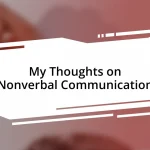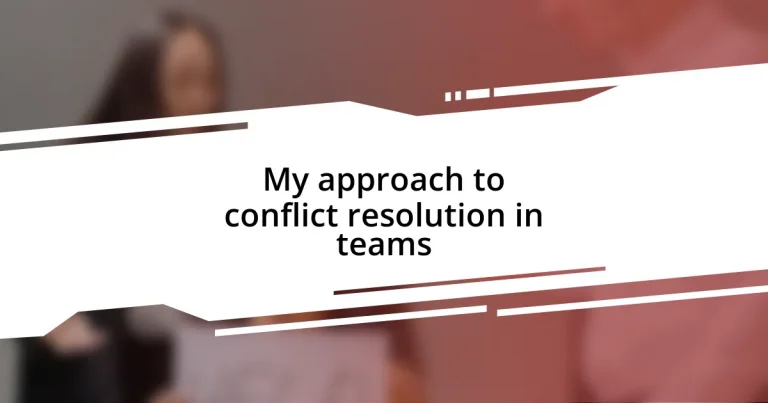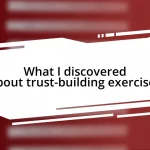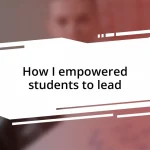Key takeaways:
- Conflict is a natural part of teamwork that can drive creativity and innovation when managed well.
- Identifying root causes of conflict, such as communication breakdowns and unmet expectations, is crucial for effective resolution.
- Techniques like active listening, “I” statements, and open-ended questions foster better communication and reduce tensions.
- Creating a conflict resolution plan with regular check-ins and follow-up discussions helps maintain team dynamics and prevents unresolved issues.
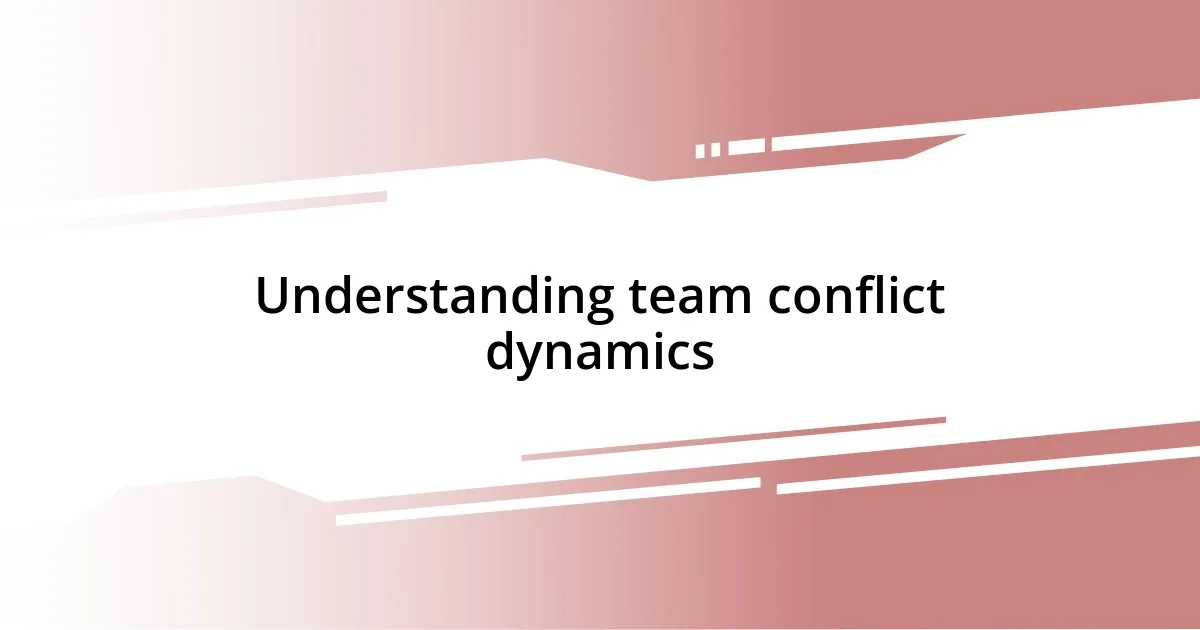
Understanding team conflict dynamics
Understanding team conflict dynamics involves recognizing that conflict is not merely a negative occurrence; it’s an inevitable part of teamwork. I remember a project where differing opinions sparked intense debates. Initially, it felt overwhelming, but as we navigated through those discussions, I realized that these moments can fuel creativity and innovation when handled well.
Every team has its unique tension points. For instance, I’ve noticed that in teams where roles overlap, misunderstandings often arise. It’s fascinating to reflect on how my own role clarity— or lack thereof— can trigger friction among teammates, leading to those “Aha!” moments of resolution.
But what truly drives conflict in teams? Is it simply clashing personalities or unaligned goals? In my experience, it’s often a mix of both, wrapped in unmet expectations. I’ve found that taking time to openly discuss these expectations allows for a deeper understanding of each member’s perspective, transforming potential conflict into an opportunity for growth.
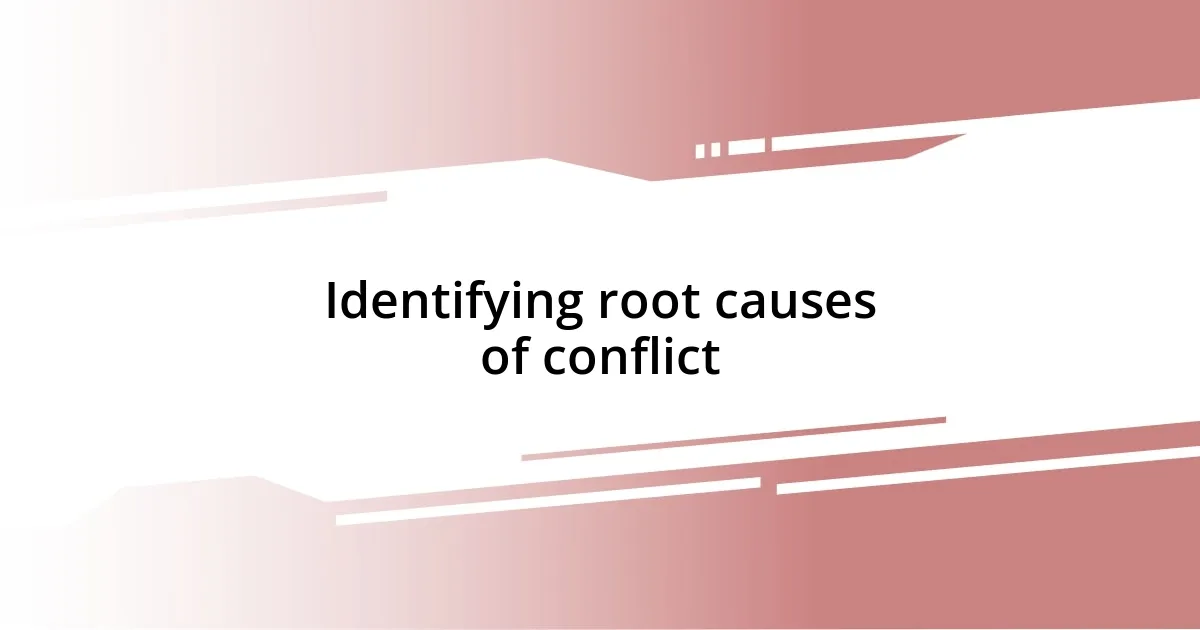
Identifying root causes of conflict
Identifying the root causes of conflict can feel like peeling an onion. It’s often multilayered, revealing deeper issues lurking beneath the surface, like differing priorities or miscommunication. I recall a time when a project deadline led to an argument between two team members; at first, it seemed like a clash of personalities. However, through discussions, we uncovered that one person felt their workload was disproportionately heavy due to a lack of clarity in task assignments. This revelation shifted our approach to not just resolving the argument, but proactively preventing it in the future.
To effectively pinpoint root causes, consider the following aspects:
- Communication breakdowns: Misunderstandings due to unclear messages can lead to escalated tensions.
- Unmet expectations: Conflicts often arise when team members have different understandings of roles or outcomes.
- Personality clashes: Individual traits or working styles can contribute to friction if not acknowledged.
- Resource competition: Limited resources can lead to conflicts over priority and access.
- Cultural differences: Diverse backgrounds may lead to differing approaches that need careful navigation.
Understanding these factors can help teams address conflicts more constructively.
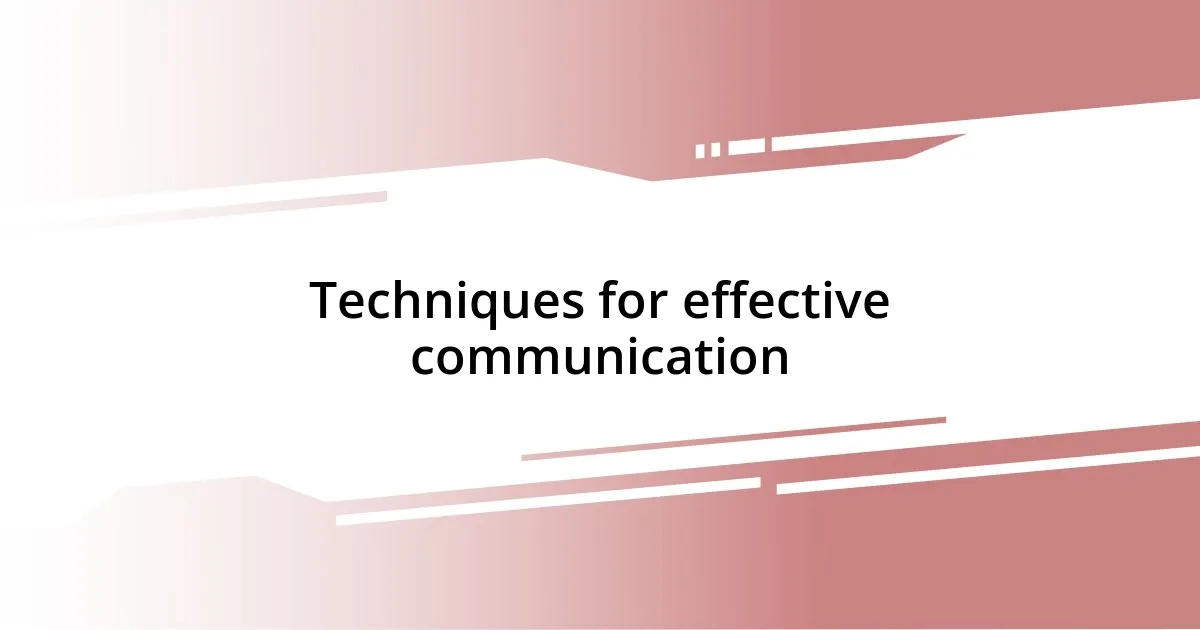
Techniques for effective communication
When it comes to effective communication, I’ve found that active listening is one of the most crucial techniques. It’s easy to jump in with our thoughts, but truly hearing what someone else is saying transforms the conversation. I recall a situation where a teammate felt overlooked during meetings. By practicing active listening, not only did I validate her feelings, but I also learned valuable insights about her concerns that I hadn’t considered before.
Another technique is utilizing “I” statements instead of “you” statements during discussions. For example, saying “I feel that we may benefit from more clarity in our roles” instead of “You’re not clear about your role” shifts the focus from blame to personal experience. I remember when this approach helped me discuss my frustrations without escalating tensions; instead, it fostered a more constructive dialogue.
Lastly, encouraging open-ended questions can enhance communication significantly. In a brainstorming session, I often ask questions like, “What are your thoughts on this approach?” rather than “Do you agree?” This invites everyone to share their perspectives freely, creating a collaborative atmosphere that not only minimizes conflict but also sparks creativity.
| Technique | Description |
|---|---|
| Active Listening | Truly understanding what others say to foster open communication. |
| I Statements | Using personal expressions to prevent blame and promote constructive discussion. |
| Open-Ended Questions | Encouraging dialogue by inviting diverse perspectives and ideas. |
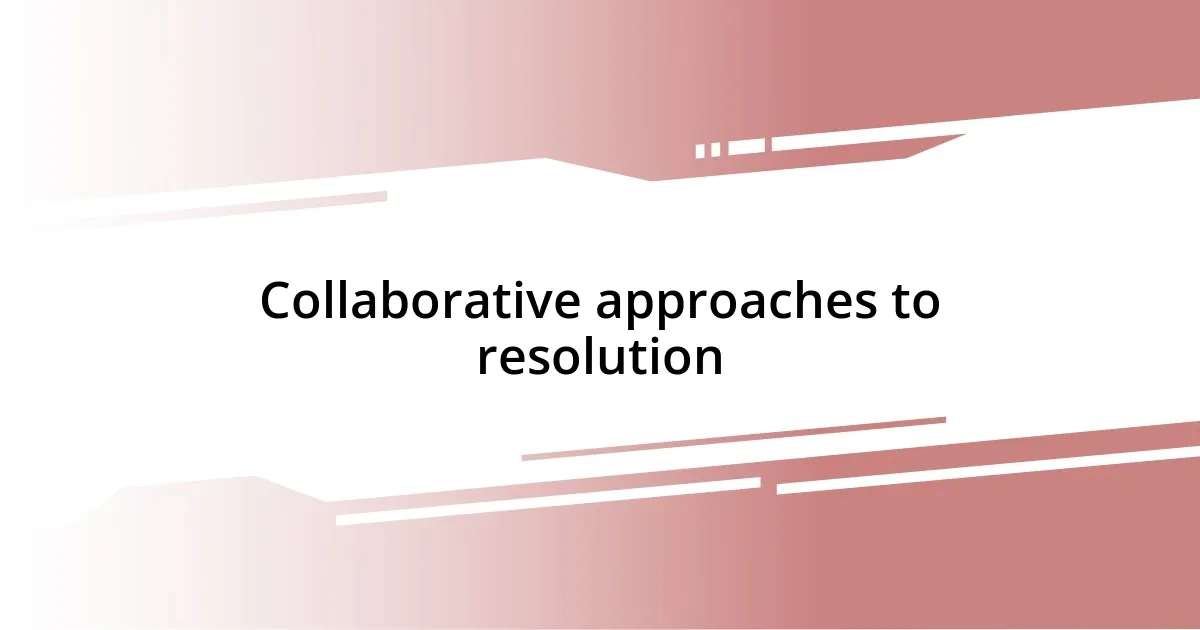
Collaborative approaches to resolution
When it comes to collaborative approaches, I’ve seen firsthand how brainstorming sessions can work wonders. I remember a time when our team was stuck on a challenging project. Instead of letting frustration build, we gathered for an informal meeting, where everyone was encouraged to share their ideas, no matter how offbeat they seemed. By creating a space where every voice mattered, we not only resolved our creative block but also strengthened our team bond. Isn’t it fascinating how collaboration can turn a difficult situation into a shared victory?
Conflict resolution can also benefit from establishing common ground. In one instance, two team members had conflicting ideas about a project direction. During a dedicated session, we focused on what they both valued: a successful outcome that met our shared goals. By highlighting these mutual interests, we shifted their discussion from contentious points to cooperative problem-solving. It was rewarding to witness their transformation from opposing sides to allies working toward a common vision. Have you ever noticed how reminding people of their shared objectives can dissolve tension?
Another powerful technique is to foster a culture of feedback and appreciation. I find that acknowledging team members’ efforts can significantly defuse potential conflicts. After a project, I often take time to express genuine appreciation for each member’s contributions. This simple act not only boosts morale but also opens the floor for constructive feedback. Have you ever thought about how a culture of appreciation could change your team dynamics? It certainly has for mine, making us more resilient in the face of disagreements.
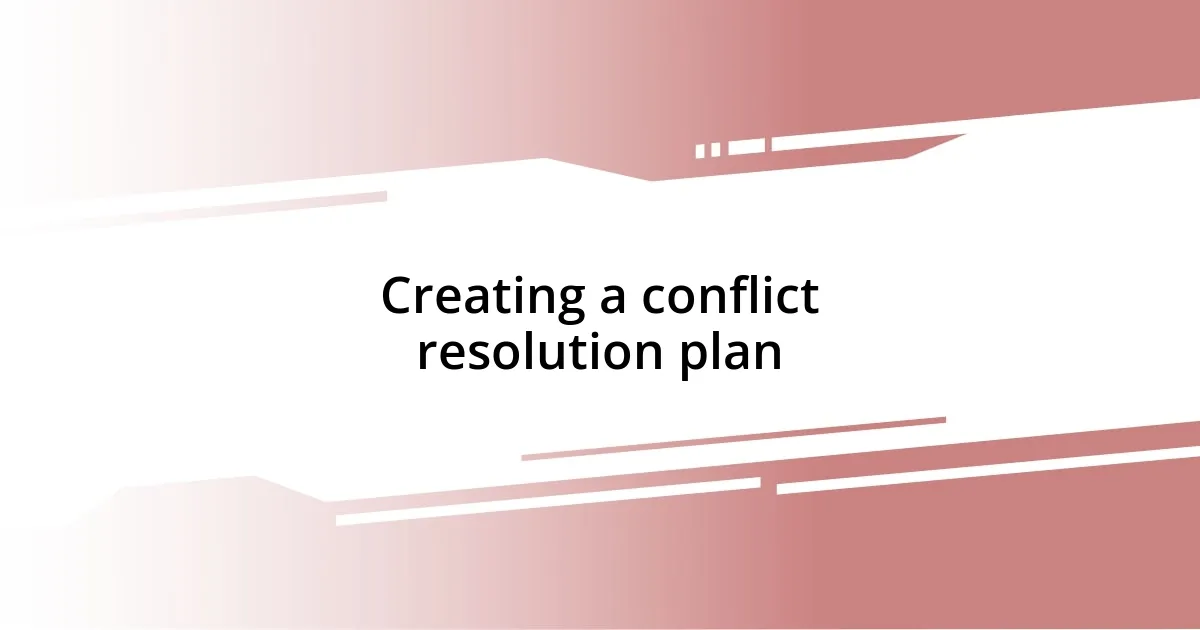
Creating a conflict resolution plan
Creating a conflict resolution plan is essential for any team. I remember implementing a plan that involved outlining clear procedures for handling disputes. When issues arise, having predefined steps helps each member know where to turn, reducing uncertainty and anxiety. It’s a bit like having a roadmap when you’re lost—you feel more in control and less overwhelmed.
One of the key components I incorporate into the plan is regular check-ins to discuss team dynamics. In my experience, these sessions provide a safe space for team members to voice concerns before they escalate into bigger issues. I once had a teammate who hesitated to share her opinions during meetings. By proactively creating a forum for open dialogue, she ultimately felt empowered to speak up, transforming our interactions and fostering a tighter-knit team.
Finally, an effective plan must include strategies for follow-up after a conflict has been addressed. I’ve seen that lack of closure can often lead to lingering resentments. I once facilitated a post-resolution discussion where we reflected on what went well and what could improve next time. This reflective practice not only reinforced our collective commitment to growth but also turned conflict into an opportunity for deeper understanding. Have you ever considered how essential it is to revisit issues to ensure everyone feels heard and valued? It makes a world of difference.
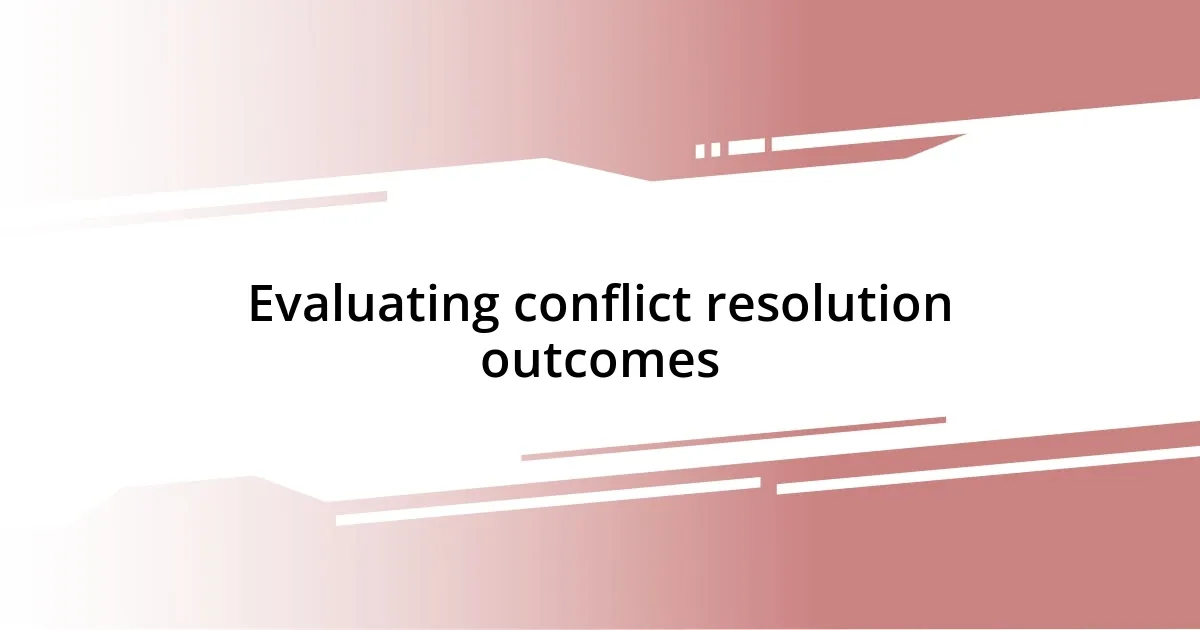
Evaluating conflict resolution outcomes
Evaluating the outcomes of conflict resolution is a crucial step in my approach. I’ve learned that reflecting on how conflicts were handled can provide clarity for future situations. After resolving a challenging disagreement within our team, I took the time to gather feedback from everyone involved. It was enlightening to hear varied perspectives, and I found that even between resolved issues, people still carried their emotional responses. Have you ever considered how those emotions can serve as valuable lessons for your team’s growth?
I often ask myself, “Did we achieve a sustainable change?” During one project, our resolution resulted in a new workflow that everyone felt comfortable with, and this was incredibly satisfying. However, I also recognized that not every resolution leads to lasting improvement. In cases where resentment lingered beneath the surface, I made a point to conduct follow-up discussions. These conversations revealed underlying issues that needed attention, reminding me of the importance of ongoing evaluation.
Ultimately, I believe that successful conflict resolution should propel the team forward rather than leave emotional scars. I remember a time when we navigated a particularly tense disagreement over resource allocation. While we found a solution, I later noticed some team members were still hesitant to collaborate. This moment taught me that revisiting outcomes is essential for fostering a genuinely cohesive team environment. It’s incredible how awareness of past conflicts can pave the way for a more harmonious future, don’t you think?
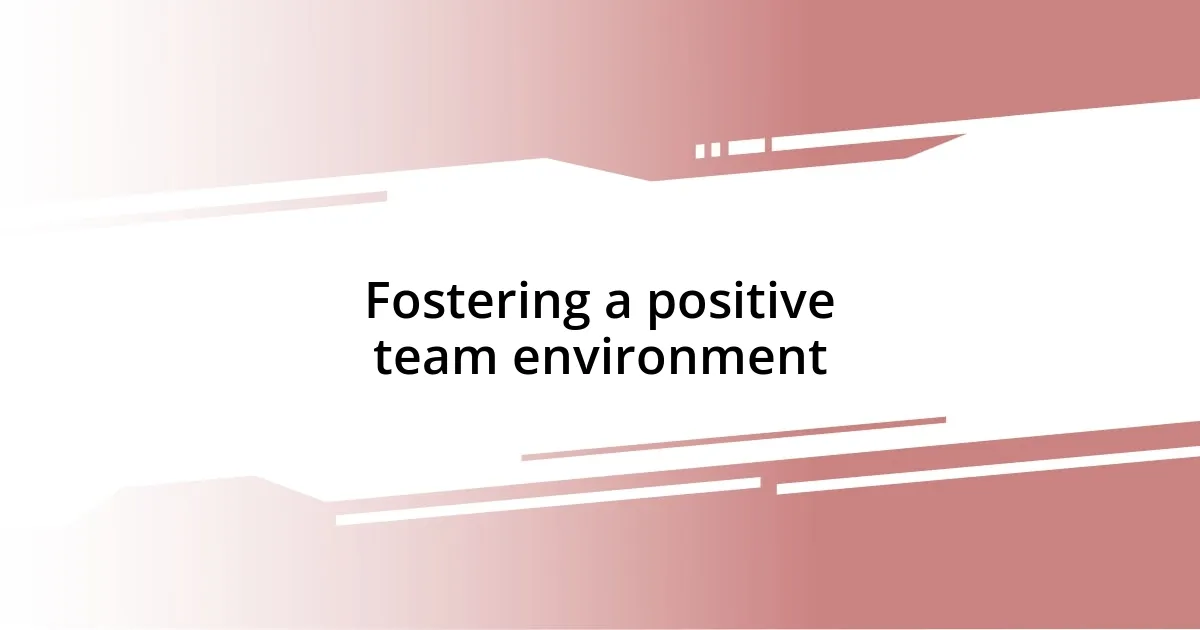
Fostering a positive team environment
Fostering a positive team environment starts with a foundation of trust and respect. I vividly recall a time when we organized an informal team-building retreat. The laughter and shared experiences broke down barriers and helped everyone to see each other as individuals rather than just colleagues. How often do we take the time to enjoy each other’s company outside of work pressures? That day, I witnessed the power of personal connections; it transformed our communication back in the office.
Encouraging transparency is another key aspect. In one project, I initiated an “open door” policy, where team members could discuss ideas or concerns without fear of judgment. I was amazed at how quickly this simple gesture changed our dynamics. Suddenly, creativity flourished, and everyone felt more comfortable contributing their thoughts. Have you noticed how a little encouragement can go a long way in unlocking potential?
Lastly, regular acknowledgment of individual contributions can really enhance morale. I made it a habit to celebrate small wins in our weekly meetings. I remember when one team member shared a brilliant idea that improved our workflow. I made sure to highlight her effort publicly, and you could almost see her confidence soar! Recognizing achievements not only boosts the individual but also reinforces a culture of appreciation and teamwork. Don’t you think that small gestures can have profound effects on how we work together?











